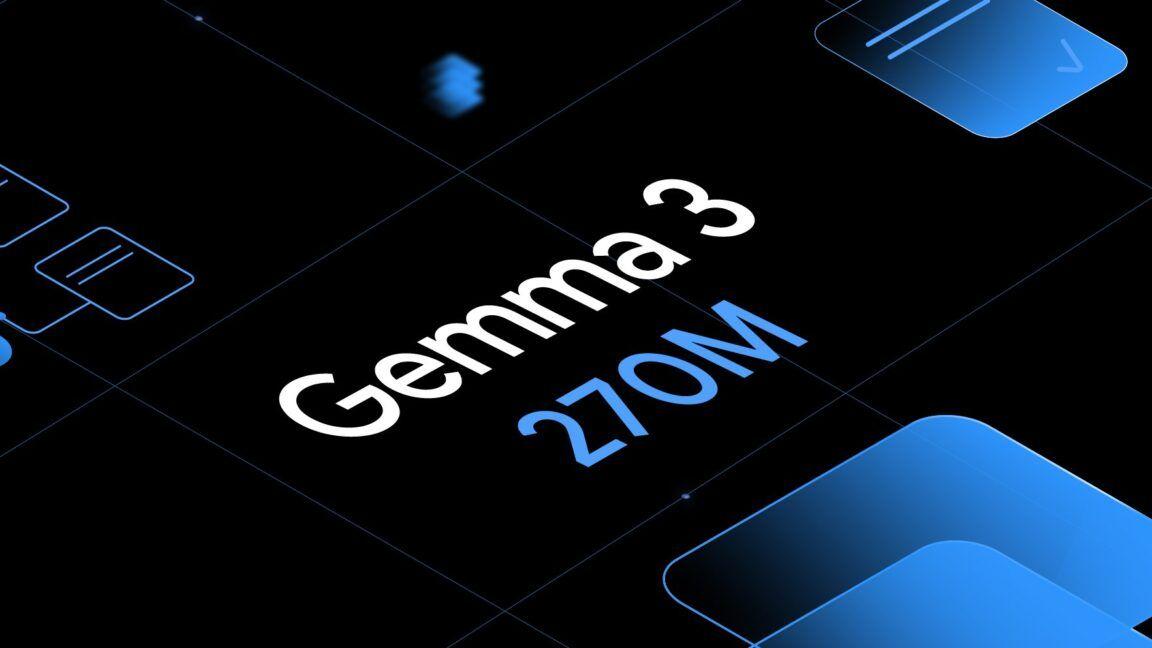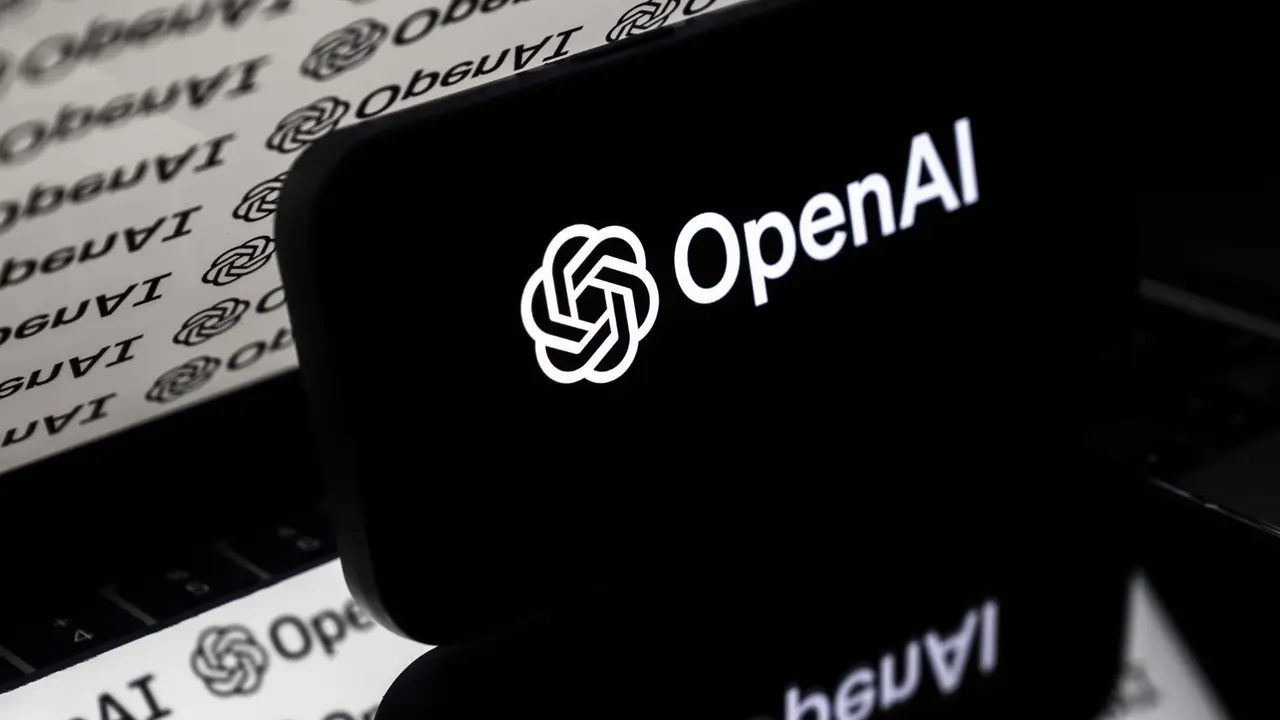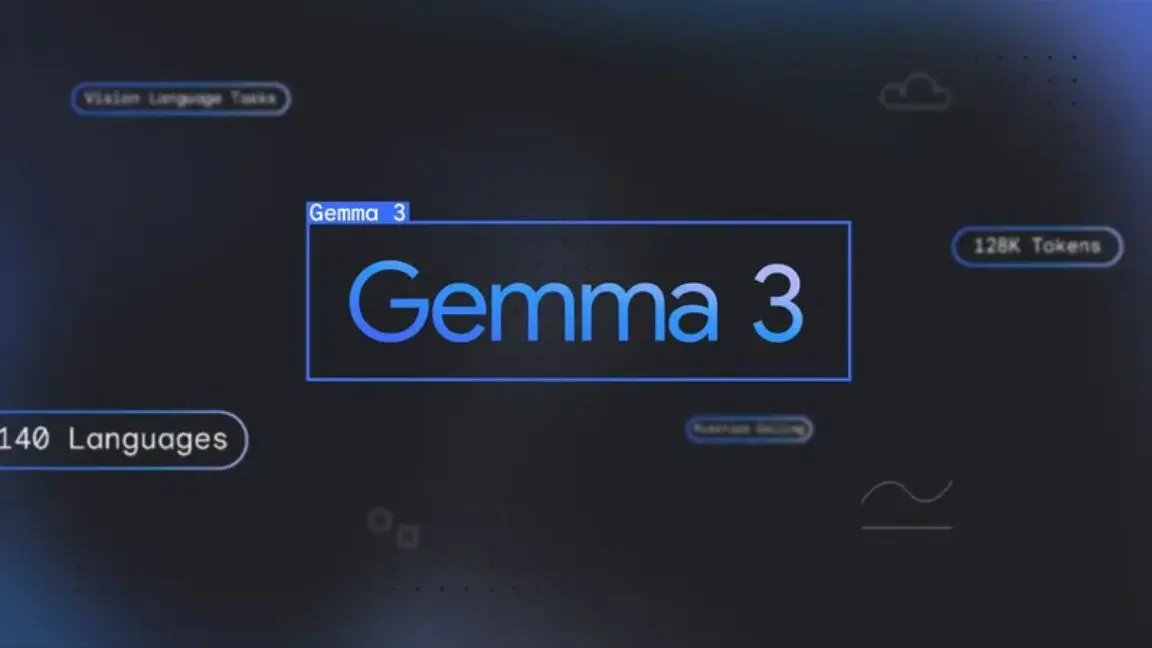Google Unveils Gemma 3 270M: A Compact AI Model Revolutionizing On-Device AI
3 Sources
3 Sources
[1]
Google releases pint-size Gemma open AI model
Big tech has spent the last few years creating ever-larger AI models, leveraging rack after rack of expensive GPUs to provide generative AI as a cloud service. But tiny AI matters, too. Google has announced a tiny version of its Gemma open model designed to run on local devices. Google says the new Gemma 3 270M can be tuned in a snap and maintains robust performance despite its small footprint. Google released its first Gemma 3 open models earlier this year, featuring between 1 billion and 27 billion parameters. In generative AI, the parameters are the learned variables that control how the model processes inputs to estimate output tokens. Generally, the more parameters in a model, the better it performs. With just 270 million parameters, the new Gemma 3 can run on devices like smartphones or even entirely inside a web browser. Running an AI model locally has numerous benefits, including enhanced privacy and lower latency. Gemma 3 270M was designed with these kinds of use cases in mind. In testing with a Pixel 9 Pro, the new Gemma was able to run 25 conversations on the Tensor G4 chip and use just 0.75 percent of the device's battery. That makes it by far the most efficient Gemma model. Developers shouldn't expect the same performance level of a multi-billion-parameter model, but Gemma 3 270M has its uses. Google used the IFEval benchmark, which tests a model's ability to follow instructions, to show that its new model punches above its weight. Gemma 3 270M hits a score of 51.2 percent in this test, which is higher than other lightweight models that have more parameters. The new Gemma falls predictably short of 1 billion-plus models like Llama 3.2, but it gets closer than you might think for having just a fraction of the parameters. Google claims Gemma 3 270M is good at following instructions out of the box, but it expects developers to fine-tune the model for their specific use cases. Due to the small parameter count, that process is fast and low-cost, too. Google sees the new Gemma being used for tasks like text classification and data analysis, which it can accomplish quickly and without heavy computing requirements. Mostly open Google refers to Gemma models as "open," which is not to be confused with "open source." This situation is the same in most ways, though. You can download the new Gemma for free, and the model weights are available. There's no separate commercial licensing agreement, so developers can modify, publish, and deploy Gemma 3 270M derivatives in their tools. However, anyone using Gemma models is bound by the terms of use, which prohibit tuning the models to produce harmful outputs or intentionally violating privacy rules. Developers are also responsible for detailing modifications and providing a copy of the terms of use for all derivative versions, which inherit Google's custom license. Gemma 3 270M is available from platforms like Hugging Face and Kaggle in both pre-trained and instruction-tuned versions. It's available in Google's Vertex AI for testing, too. Google has also highlighted the capabilities of the new model with a fully browser-based story generator built on Transformer.js (see above). You can give that a shot even if you're not interested in developing with the new lightweight model.
[2]
Google unveils ultra-small and efficient open source AI model Gemma 3 270M that can run on smartphones
Want smarter insights in your inbox? Sign up for our weekly newsletters to get only what matters to enterprise AI, data, and security leaders. Subscribe Now Google's DeepMind AI research team has unveiled a new open source AI model today, Gemma 3 270M. As its name would suggest, this is a 270-million-parameter model -- far smaller than the 70 billion or more parameters of many frontier LLMs (parameters being the number of internal settings governing the model's behavior). While more parameters generally translates to a larger and more powerful model, Google's focus with this is nearly the opposite: high-efficiency, giving developers a model small enough to run directly on smartphones and locally, without an internet connection, as shown in internal tests on a Pixel 9 Pro SoC. Yet, the model is still capable of handling complex, domain-specific tasks and can be quickly fine-tuned in mere minutes to fit an enterprise or indie developer's needs. On the social network X, Google DeepMind Staff AI Developer Relations Engineer Omar Sanseviero added that it Gemma 3 270M can also run directly in a user's web browser, on a Raspberry Pi, and "in your toaster," underscoring its ability to operate on very lightweight hardware. Gemma 3 270M combines 170 million embedding parameters -- thanks to a large 256k vocabulary capable of handling rare and specific tokens -- with 100 million transformer block parameters. According to Google, the architecture supports strong performance on instruction-following tasks right out of the box while staying small enough for rapid fine-tuning and deployment on devices with limited resources, including mobile hardware. Gemma 3 270M inherits the architecture and pretraining of the larger Gemma 3 models, ensuring compatibility across the Gemma ecosystem. With documentation, fine-tuning recipes, and deployment guides available for tools like Hugging Face, UnSloth, and JAX, developers can move from experimentation to deployment quickly. High scores on benchmarks for its size, and high hefficiency On the IFEval benchmark, which measures a model's ability to follow instructions, the instruction-tuned Gemma 3 270M scored 51.2%. The score places it well above similarly small models like SmolLM2 135M Instruct and Qwen 2.5 0.5B Instruct, and closer to the performance range of some billion-parameter models, according to Google's published comparison. However, as researchers and leaders at rival AI startup Liquid AI pointed out in replies on X, Google left off Liquid's own LFM2-350M model released back in July of this year, which scored a whopping 65.12% with just a few more parameters (similar sized language model, however). One of the model's defining strengths is its energy efficiency. In internal tests using the INT4-quantized model on a Pixel 9 Pro SoC, 25 conversations consumed just 0.75% of the device's battery. This makes Gemma 3 270M a practical choice for on-device AI, particularly in cases where privacy and offline functionality are important. The release includes both a pretrained and an instruction-tuned model, giving developers immediate utility for general instruction-following tasks. Quantization-Aware Trained (QAT) checkpoints are also available, enabling INT4 precision with minimal performance loss and making the model production-ready for resource-constrained environments. A small, fine-tuned version of Gemma 3 270M can perform many functions of larger LLMs Google frames Gemma 3 270M as part of a broader philosophy of choosing the right tool for the job rather than relying on raw model size. For functions like sentiment analysis, entity extraction, query routing, structured text generation, compliance checks, and creative writing, the company says a fine-tuned small model can deliver faster, more cost-effective results than a large general-purpose one. The benefits of specialization are evident in past work, such as Adaptive ML's collaboration with SK Telecom. By fine-tuning a Gemma 3 4B model for multilingual content moderation, the team outperformed much larger proprietary systems. Gemma 3 270M is designed to enable similar success at an even smaller scale, supporting fleets of specialized models tailored to individual tasks. Demo Bedtime Story Generator app shows off the potential of Gemma 3 270M Beyond enterprise use, the model also fits creative scenarios. In a demo video posted on YouTube, Google shows off a Bedtime Story Generator app built with Gemma 3 270M and Transformers.js that runs entirely offline in a web browser, showing the versatility of the model in lightweight, accessible applications. The video highlights the model's ability to synthesize multiple inputs by allowing selections for a main character (e.g., "a magical cat"), a setting ("in an enchanted forest"), a plot twist ("uncovers a secret door"), a theme ("Adventurous"), and a desired length ("Short"). Once the parameters are set, the Gemma 3 270M model generates a coherent and imaginative story. The application proceeds to weave a short, adventurous tale based on the user's choices, demonstrating the model's capacity for creative, context-aware text generation. This video serves as a powerful example of how the lightweight yet capable Gemma 3 270M can power fast, engaging, and interactive applications without relying on the cloud, opening up new possibilities for on-device AI experiences. Open-sourced under a Gemma custom license Gemma 3 270M is released under the Gemma Terms of Use, which allow use, reproduction, modification, and distribution of the model and derivatives, provided certain conditions are met. These include carrying forward use restrictions outlined in Google's Prohibited Use Policy, supplying the Terms of Use to downstream recipients, and clearly indicating any modifications made. Distribution can be direct or through hosted services such as APIs or web apps. For enterprise teams and commercial developers, this means the model can be embedded in products, deployed as part of cloud services, or fine-tuned into specialized derivatives, so long as licensing terms are respected. Outputs generated by the model are not claimed by Google, giving businesses full rights over the content they create. However, developers are responsible for ensuring compliance with applicable laws and for avoiding prohibited uses, such as generating harmful content or violating privacy rules. The license is not open-source in the traditional sense, but it does enable broad commercial use without a separate paid license. For companies building commercial AI applications, the main operational considerations are ensuring end users are bound by equivalent restrictions, documenting model modifications, and implementing safety measures aligned with the prohibited uses policy. With the Gemmaverse surpassing 200 million downloads and the Gemma lineup spanning cloud, desktop, and mobile-optimized variants, Google AI Developers are positioning Gemma 3 270M as a foundation for building fast, cost-effective, and privacy-focused AI solutions, and already, it seems off to a great start.
[3]
Google's Gemma 3 270M is a compact, yet powerful AI model that can run on your toaster - SiliconANGLE
Google's Gemma 3 270M is a compact, yet powerful AI model that can run on your toaster Google LLC's DeepMind artificial intelligence lab has released one of its smallest models yet in the shape of Gemma 3 270M, with just 270 million parameters. That means it's much smaller than many of the most powerful frontier large language models, which generally have billions of parameters, or internal settings that govern their behavior. The number of parameters in a model generally describes how powerful it is, but with Gemma 3 270M, Google has opted to create something that's much more streamlined, with the intention being that it can run directly on low power devices such as smartphones, without an internet connection. Despite this, Google says Gemma 3 270M is still more than capable of handling a narrow range of complex, domain-specific tasks, because developers can quickly fine-tune it to meet their needs. Google DeepMind Staff AI Developer Relations Engineer Omar Sanseviero said in a post on X that Gemma 3 270M is open-source and small enough to run "in your toaster", or alternatively on a device such as the palm-sized Raspberry Pi computer. In a blog post announcing Gemma 3 270M, Google's DeepMind team explained that the model combines 170 million "embedding parameters" with 100 million "transformer block parameters." It's able to handle very specific and rare tokens too, making it a "strong base model" that can be fine-tuned on specific tasks and languages. The company added that Gemma 3 270M's architecture is suitable for "strong performance" in instruction-following tasks, yet small enough to be fine-tuned rapidly and deployed on devices with limited power. Its architecture is based on the larger Gemma 3 models, which are designed to run on a single graphics processing unit, and comes with various fine-tuning recipes, documentation and deployment guides for developer tools including Hugging Face, JAX and UnSlot to help users start building applications for the model quickly. Gemma 3 270M's benchmark results look fairly impressive. On the IFEval benchmark, which aims to measure AI models' ability to follow instructions properly, an instruction-tuned version of the model achieved a 51.2% score, according to results shared on X. That surpasses the score of similarly-sized small models such as Qwen 2.5 0.5B Instruct and SmolLM2 135M Instruct by a large margin. It's also not far behind some of the smaller billion-parameter models, Google noted. That said, Gemma 3 270M may not be the best in its class. One of Google's rivals, a startup called Liquid AI Inc., posted in response that the company neglected to include its LFM2-350M model, which was launched last month and achieved a 65.12% score on the same benchmark, despite only having a few more parameters. Nonetheless, Google stressed that Gemma 3 270M is all about energy efficiency, pointing to internal tests using the INT4-quantized version of the model on a Pixel 9 Pro smartphone. It said that in 25 conversations, the model only used up 0.75% of the Pixel's battery power. As such, Google says Gemma 3 270M is an excellent option for developers looking to deploy on-device AI, which is often preferable for applications where privacy and offline functionality are necessary. Google stressed that AI developers need to choose the right tool for the job, rather than simply focusing on model size to increase the performance of their AI applications. For workloads such as creative writing, compliance checks, entity extraction, query routing, sentiment analysis and structured text generation, it believes that Gemma 3 270M can be fine-tuned to do an effective job with much greater cost efficiency than a multi-billion parameter large language model. In a demo video posted on YouTube, Google showed how one developer built a Bedtime Story Generator app powered by Gemma 3 270M. It's capable of running offline in a web browser and creating original stories for kids based on the parent's prompts: The video demonstrates Gemma 3 270M's ability to synthesize multiple inputs at once, so the user could specify a main character, such as a magic cat, a setting, like an enchanted forest, a theme for the story, a plot twist, such as the character finds a mysterious box with something inside, and also the length of the story. Once the user sets these parameters, Gemma 3 270M quickly generates a coherent, original story based on the user's inputs. It's a great example of how quickly on-device AI is progressing, creating possibilities for new kinds of applications that don't even need an internet connection.
Share
Share
Copy Link
Google's DeepMind releases Gemma 3 270M, a small but powerful open-source AI model designed for efficient on-device performance, capable of running on smartphones and even in web browsers.
Google Introduces Gemma 3 270M: A Breakthrough in Compact AI
Google's DeepMind AI research team has unveiled Gemma 3 270M, a groundbreaking open-source AI model that marks a significant shift in the landscape of artificial intelligence
1
. Unlike the trend of creating ever-larger AI models, Gemma 3 270M focuses on efficiency and compact design, featuring just 270 million parameters compared to the billions found in frontier large language models (LLMs)2
.Compact Design with Powerful Capabilities

Source: Ars Technica
Despite its small size, Gemma 3 270M packs a punch in terms of performance. The model combines 170 million embedding parameters with 100 million transformer block parameters, allowing it to handle complex, domain-specific tasks
2
. Google claims that Gemma 3 270M can be fine-tuned rapidly to fit specific enterprise or developer needs, making it a versatile tool for various applications1
.On-Device AI: A New Frontier

Source: VentureBeat
One of the most significant features of Gemma 3 270M is its ability to run directly on devices like smartphones, Raspberry Pi, and even in web browsers without an internet connection
2
. This capability opens up new possibilities for on-device AI, particularly in scenarios where privacy and offline functionality are crucial3
.In internal tests using a Pixel 9 Pro smartphone, the INT4-quantized version of Gemma 3 270M demonstrated remarkable efficiency:
- 25 conversations consumed just 0.75% of the device's battery
2
- Capable of running 25 conversations on the Tensor G4 chip
1
Impressive Benchmark Performance
Despite its compact size, Gemma 3 270M has shown impressive results on industry benchmarks:
- Scored 51.2% on the IFEval benchmark, which tests a model's ability to follow instructions
1
- Outperformed other lightweight models with more parameters
1
- Approached the performance of some billion-parameter models
2
However, it's worth noting that a rival AI startup, Liquid AI, claimed their LFM2-350M model achieved a higher score of 65.12% on the same benchmark with only slightly more parameters
2
.Versatility and Applications
Google envisions Gemma 3 270M being used for a wide range of tasks, including:
- Text classification
- Data analysis
- Sentiment analysis
- Entity extraction
- Query routing
- Structured text generation
- Compliance checks
- Creative writing
1
2
The company argues that for many of these tasks, a fine-tuned small model like Gemma 3 270M can deliver faster, more cost-effective results than larger, general-purpose models
2
.Related Stories
Demonstrating Real-World Potential
To showcase the model's capabilities, Google released a demo of a Bedtime Story Generator app built with Gemma 3 270M and Transformers.js
2
. This application, which runs entirely offline in a web browser, allows users to input parameters such as main character, setting, plot twist, theme, and desired length to generate a coherent and imaginative story3
.Open-Source with Conditions
Gemma 3 270M is released under the Gemma Terms of Use, which allows for use, reproduction, modification, and distribution of the model and its derivatives, subject to certain conditions
2
. These include adhering to Google's Prohibited Use Policy and clearly indicating any modifications made to the model2
.As AI continues to evolve, Gemma 3 270M represents a significant step towards more efficient, accessible, and versatile AI models that can operate effectively on a wide range of devices, potentially democratizing access to AI technology.
References
Summarized by
Navi
[1]
[2]
Related Stories
Google's Gemma 3n: A Breakthrough in On-Device AI with Open-Source Multimodal Capabilities
27 Jun 2025•Technology

Google Unveils Gemma 3n: A Breakthrough in On-Device AI for Resource-Constrained Devices
22 May 2025•Technology

Google Unveils Enhanced Gemma LLMs: Smaller, Safer, and More Powerful
01 Aug 2024

Recent Highlights
1
AI Chatbots Sway Voters More Effectively Than Traditional Political Ads, New Studies Reveal
Science and Research

2
Trump signs executive order to override state AI laws despite bipartisan pushback
Policy and Regulation

3
OpenAI warns upcoming AI models will likely pose high cybersecurity risk with zero-day exploits
Technology





